Muse Walk
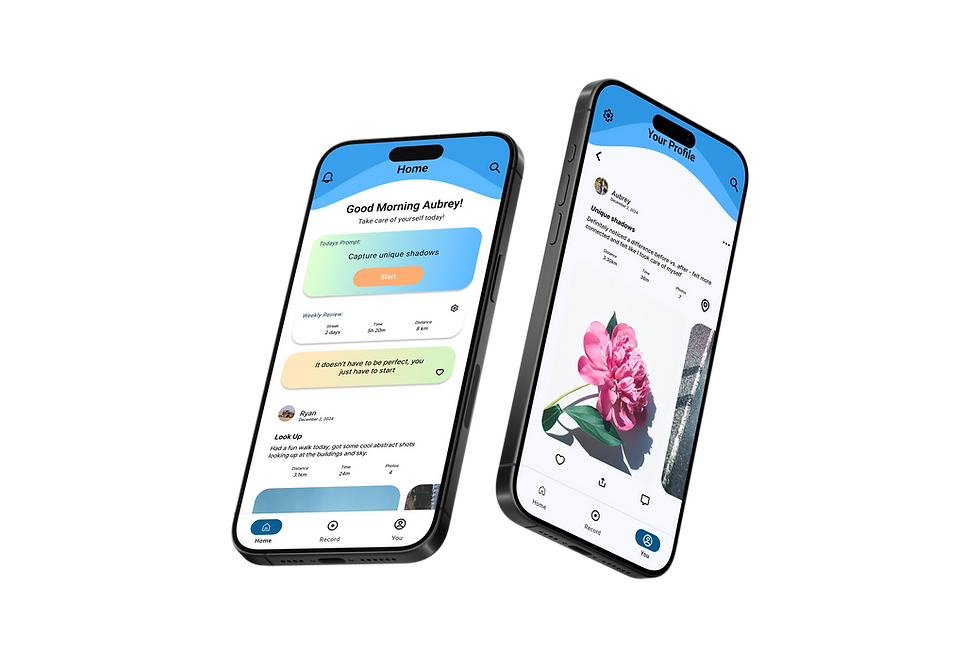
Tools
Figma
Adobe Photoshop
Adobe Illustrator
Duration
8 Weeks
Nov-Dec 2024
Overview
MuseWalk is a mobile app that aims to inspire people to engage in mindful walking with exploration of their environment through creative photography. The app fosters a deeper, more conscious connection with themselves and their surroundings by creating a meaningful, intuitive digital experience while exploring the intersection of how our digital devices can help us connect more to our physical world.
The Problem Statement
Individuals struggle to find time for physical activity, creativity, and mindfulness in an active way. Users need a tool that motivates them to take mindful walks and get outside.
The Solution
MuseWalk integrates mindfulness, physical activity, and creativity through daily prompts. It fosters well-being by encouraging mindful walks through creative photography in a fun, engaging way.
Empathize
To build a meaningful and user-centered experience, I began by understanding the real needs, behaviors, and challenges of my target users. I conducted primary research and evaluated existing solutions to uncover gaps and opportunities.
-
Conducted a detailed user survey to uncover pain points, motivations, and unmet needs related to mindfulness, creativity, and outdoor activity.
-
Developed three research-based user personas to represent common behaviors and goals, helping guide design decisions from a user-centered perspective.
-
Performed a competitive analysis of similar wellness and mindfulness apps, identifying key strengths, weaknesses, and opportunities for MuseWalk to differentiate.
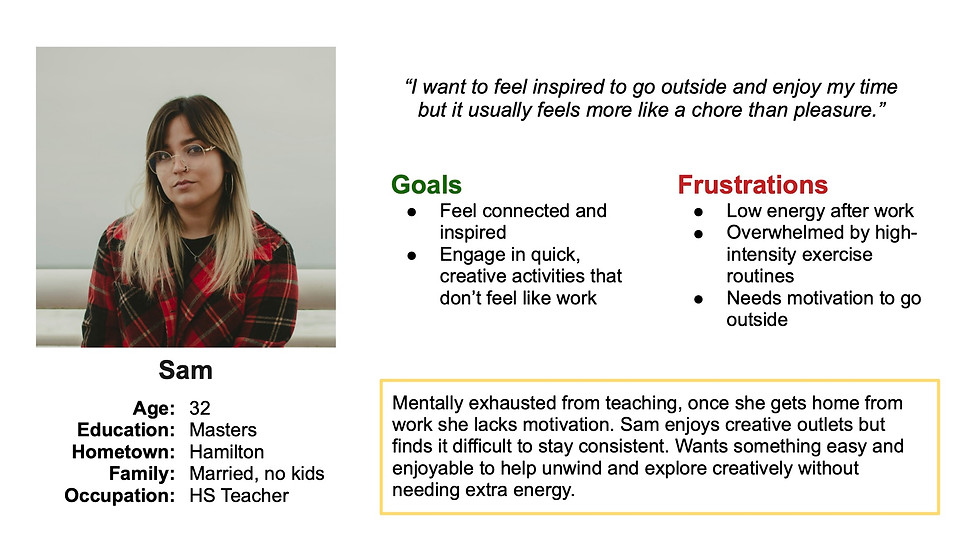
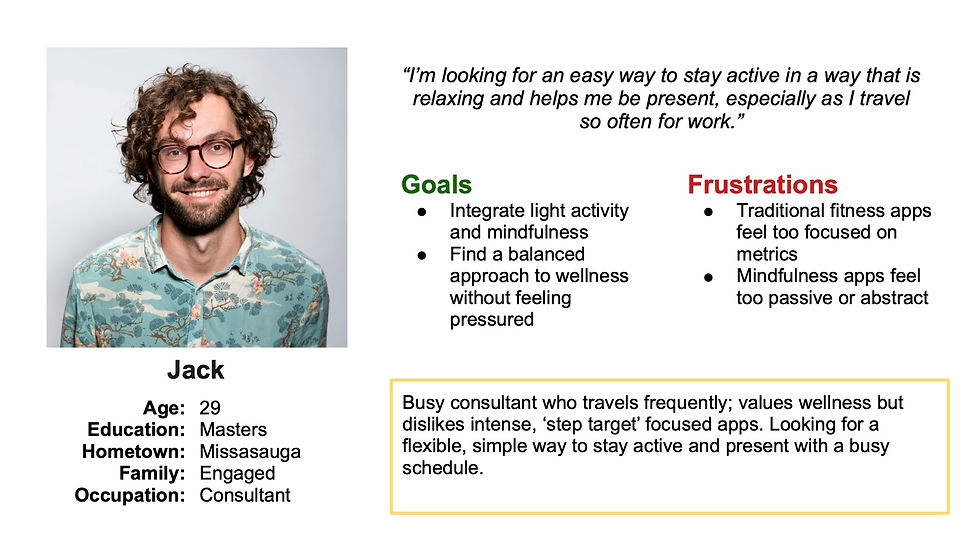
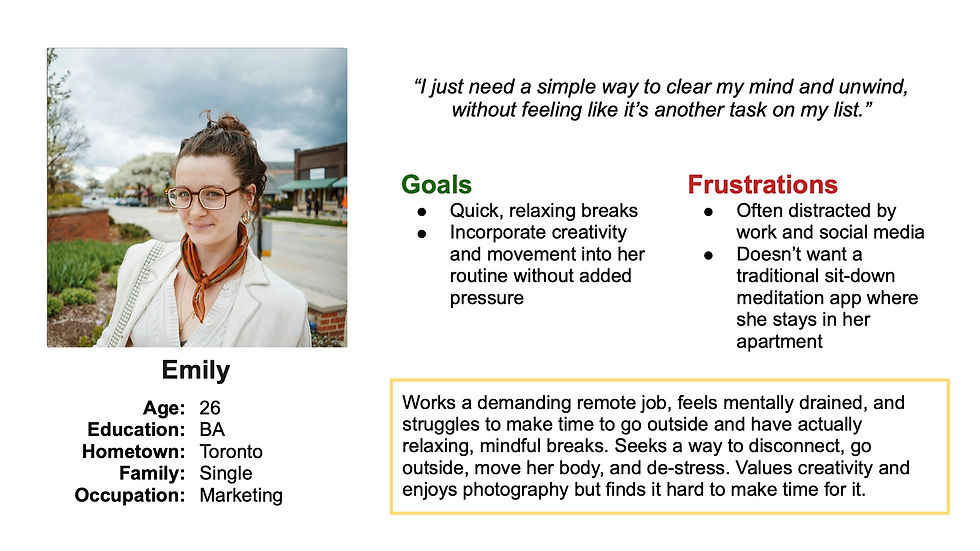
Define
With research insights in hand, I moved into defining the core problem and framing it in a way that would inspire solution-finding. I synthesized data and transformed it into actionable design challenges.
-
Analyzed survey responses and research findings using an affinity diagram to group key insights and recurring themes.
-
Identified user pain points and opportunities, then translated them into actionable design prompts using “How Might We” (HMW) questions.
-
Defined a clear problem statement and aligned on the app’s core value proposition: to integrate mindfulness, physical activity, and creativity in a light, motivating way.
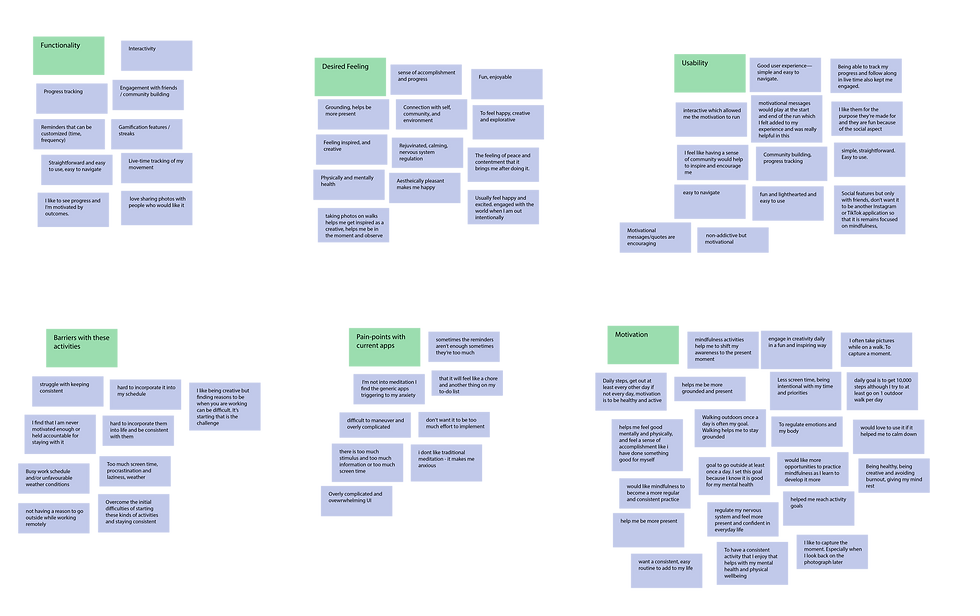
Ideate
Using the defined problem and opportunities, I explored a range of possible solutions through rapid ideation and interaction mapping. This phase helped shape the core structure and direction of the product.
-
Designed the main user flow, emphasizing the experience of discovering and completing a daily prompt.
-
Developed the app’s information architecture to ensure a logical, intuitive structure that supports ease of use.
-
Applied the Crazy 8s method to generate a variety of layout and interaction ideas for key screens, helping expand visual and functional possibilities before narrowing down.
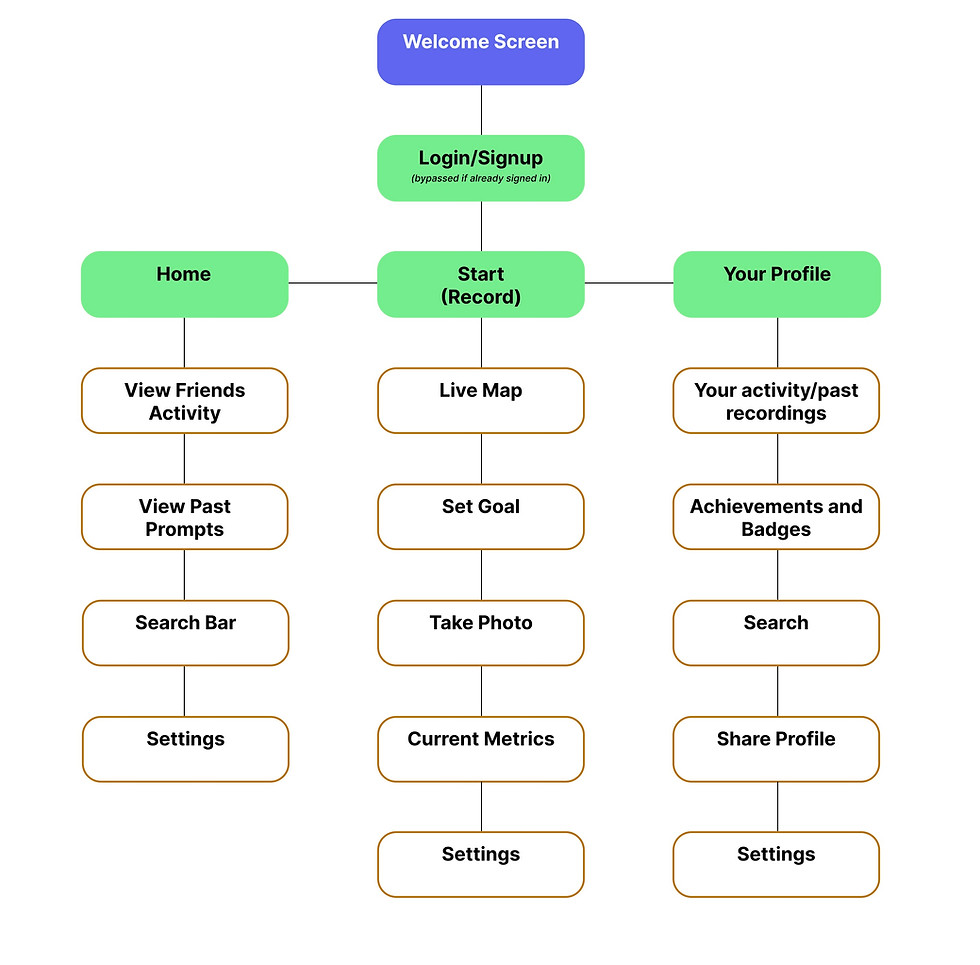

Prototype
With a solid concept and structure in place, I brought the app to life through visual design and high-fidelity prototyping. This stage focused on translating functionality into an intuitive and emotionally resonant user interface.
-
Created low-fidelity wireframes for both mobile and web platforms to visualize layout, hierarchy, and essential components, prioritizing clarity and usability.
-
Developed a calming and motivational visual identity using a soft palette (sage green, coral, muted blue) and clean typography (Poppins for headings, Lato for body text).
-
Designed the first iteration of high-fidelity prototypes, incorporating branding, graphics, and thoughtful UI choices to ensure a cohesive user experience across platforms.
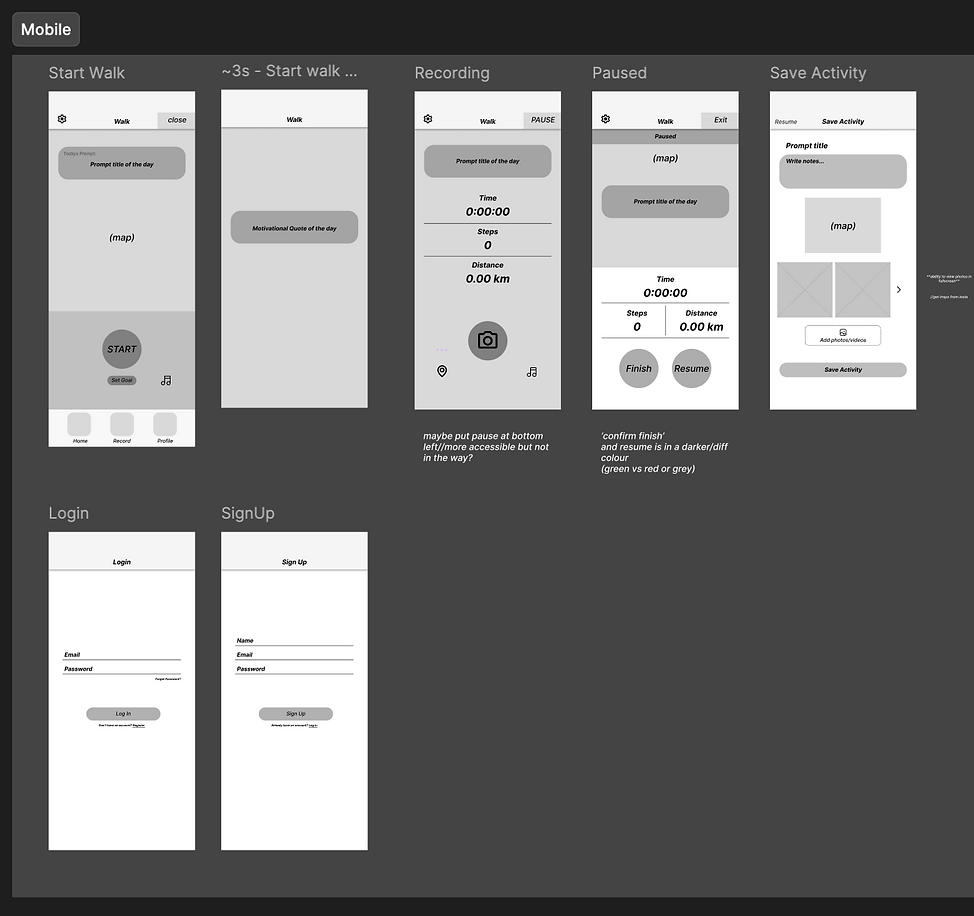
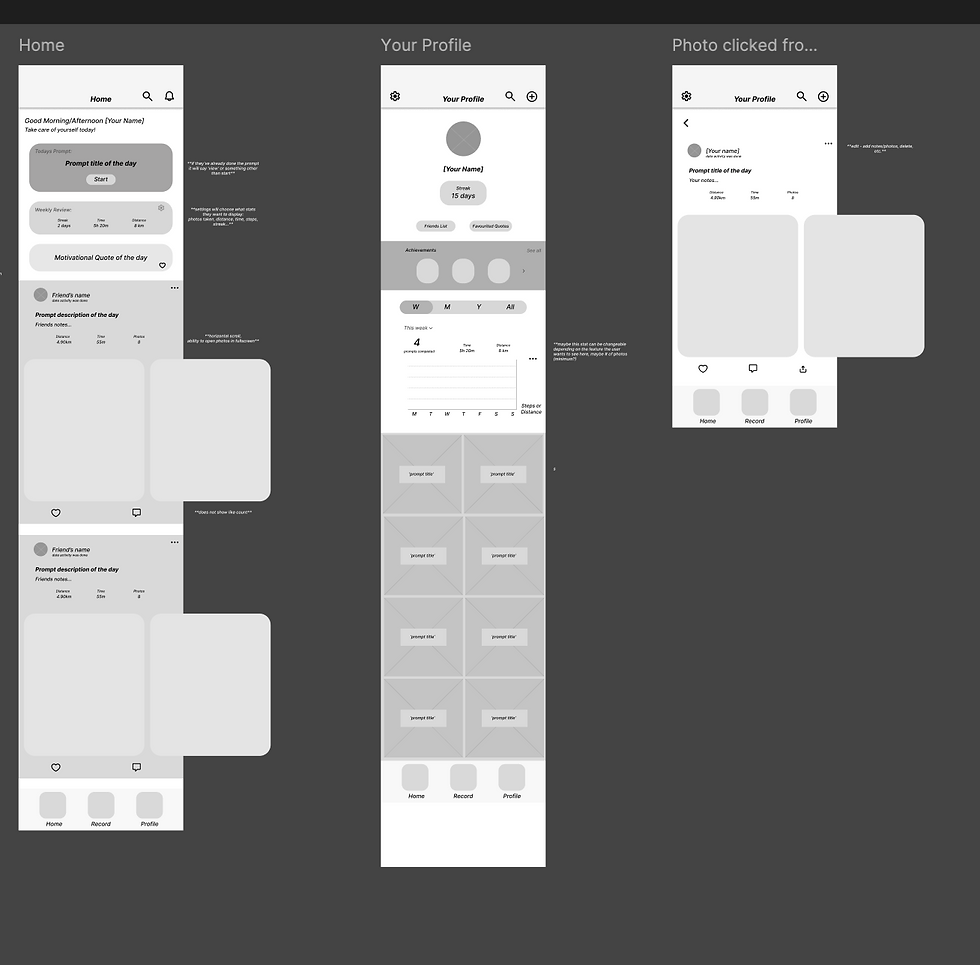
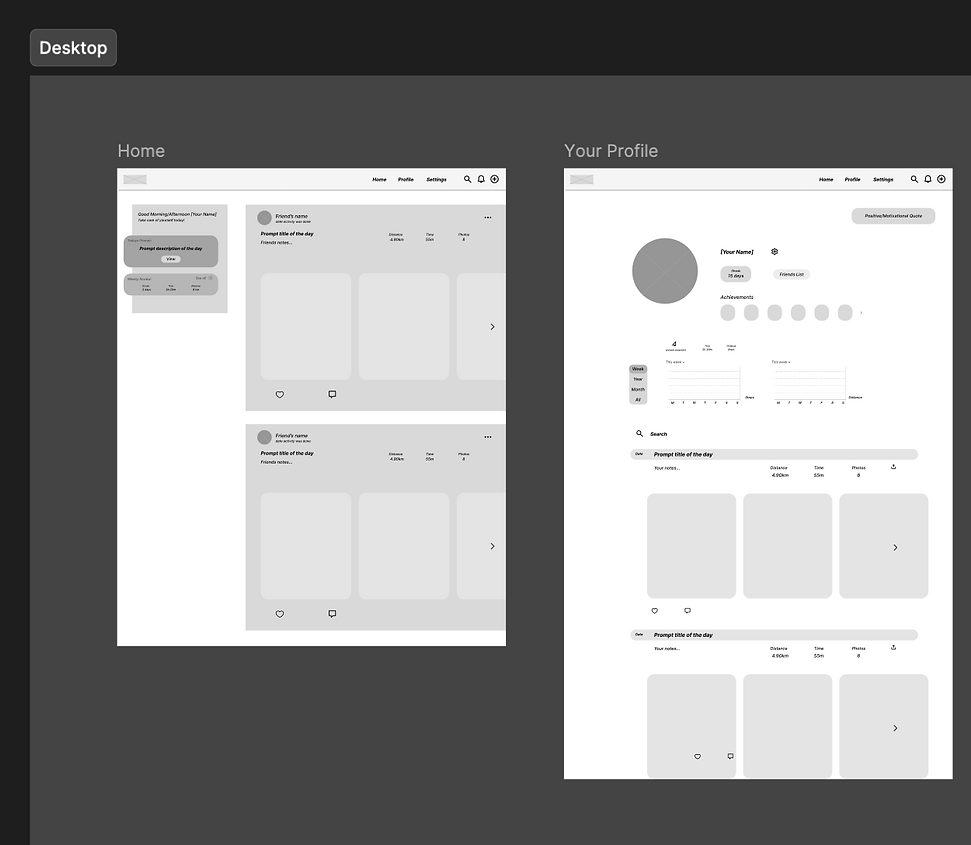
Test
To validate design decisions and uncover usability issues, I conducted hands-on user testing. This phase helped refine the experience based on real feedback.
-
Conducted usability tests with three participants, focusing on core tasks such as navigating daily prompts, recording a walk, and exploring completed challenges.
-
Observed user behavior and gathered qualitative feedback to identify friction points and confusing elements.
-
Iterated on the design based on findings, improving interactions and flow to create a more seamless and enjoyable experience.
Final Design
As the final step, I utilized the observations and feedbacks gathered from the testing stage to createa final design. Then, I compiled the full design journey into a comprehensive, story-driven case study presentation.
-
Showcased the full design thinking process - from initial problem framing through to final prototypes.
-
Highlighted MuseWalk’s unique approach to well-being through mindful technology use.
